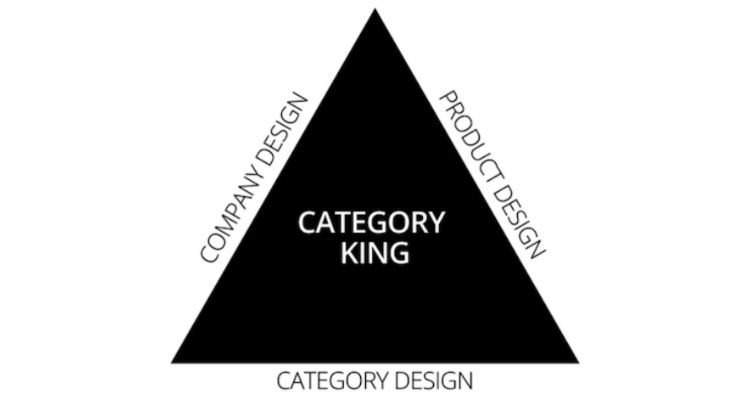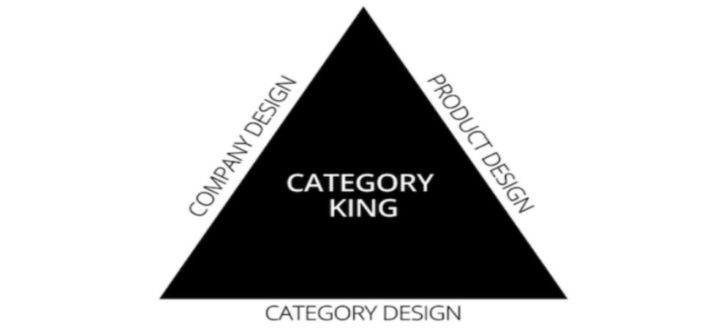Category Design is a methodology that’s being embraced among venture capitalists and the technology startup community. It was first proposed in our 2016 book, Play Bigger.
Mike Maples, founding partner of VC firm Floodgate, wrote that the ideas behind category design “will be relevant to the next ten years in the same way that the ideas of lean startups and customer development were to the last ten.” And category design is not just for startups. Companies such as Corning Glass and IBM have been masters at category design for more than a century.

This article unpacks exactly what is category design. At its core, category design is a way to identify and create a new market category – and purposefully design the category so customers see your company as the category leader and shaper.
If you think about it, this is the thinking behind great success stories like Salesforce.com, which created the cloud enterprise software category, and Uber, which defined the category of on-demand transportation. Back in the 1980s, Chrysler defined, developed and then dominated a then-new category of car called the minivan.
In the 2010s, category creation has become more important than ever. According to research by venture firm Accel Partners, the odds of big-time success for any one company are getting worse. Accel’s data shows that from 2000 to 2016, about 41,000 companies got venture funding. Less than 500 had an exit of more than $100 million, and just 66 had an exit of more than $1 billion. So to get to “unicorn” status, any one company’s odds of success are 0.16%.
On top of that, markets are increasingly winner take all. Our data analysis of U.S. venture capital–backed tech start-ups founded from 2000 to 2015 showed that category kings earned 76% of the market capitalization of their entire market categories. Category kings suck up 70% to 80% of their category’s profits. All the also-ran competitors are stuck battling for slices of market share.
Just look around, and the power of category kings is obvious. The five most valuable U.S. companies all carved out giant categories all to themselves: Facebook (social networking), Google (search), Amazon (online retail), Microsoft (productivity software) and, finally, Apple (primarily the iPhone).
Bottom line:
Category creation and domination has to be a goal for any ambitious company. How, then, do you get a company’s leaders to think like category designers?
Category design is rooted in the science of cognitive biases. As author Daniel Kahneman described in his book Thinking Fast and Slow, our decisions are heavily influenced by more than 50 cognitive biases based on beliefs and emotions. Facts mean less than biases. One cognitive bias, for instance, is the Anchoring Effect – the earliest information we get about something has the most influence. Another is the Choice Supportive bias – we tend to feel like something is the best just because we chose it.
Also, our brains naturally organize things into categories. We tend to think, for instance, “I want an electric guitar.” Then we think about brands and details. If one brand already dominates that category, it gets our attention first.
Put all that together, and the job of a category designer is to establish a category in people’s brains, and create a bias toward your product in that category – because once a bias gets established, it’s hard to shake. Everyone running a company today needs to understand that their number one job is to change people’s minds. You have to win our biases.
How can you go about doing that?
Actionable Category Design Approach
It’s way more than marketing or branding. Category design is a whole-company strategy that guides product design, informs the culture, and shapes the company’s message to the world. Think of it as a whole. Defining the category can shape a product’s features or purpose. It can shape the kind of company you build. At the same time, the product and company have an impact on what kind of category you design. They work together.
In our
book, we tell the story of Clarence Birdseye. In the 1920s, he invented the
category of frozen food. It had never existed before. There were no freezer
cars on trains or freezer cases in grocery stores. The public didn’t know why it might want frozen food. Birdseye had to
tell them. And he had to shape his company, his product and the whole category
at the same time. The brand still dominates the category almost 100 years
later.
Much more recently, we worked with Sensity Systems on category design. Sensity
started out as an industrial LED light maker – one of many in a crowded field.
Like many LED companies, Sensity realized it could arm LED lights with sensors
that could collect data – for instance, a streetlight in a parking lot could
track the movement of cars.
The company had an a-ha moment, concluding that it could steer into the business of networking millions of sensors on lights and collecting and analyzing the data. Eventually, Sensity’s leadership designed a category it called Light Sensory Networks. The category positioning helped Sensity win partnerships with Cisco and GE. In 2016, Sensity was bought by Verizon — at a higher valuation more in line with a networking company than a lighting company.
About the Author

Peter Goldie has a track record of creating & launching market-dominating products and is now a player-turned-coach, helping companies with the emerging discipline of category design. For the last decade, he’s been an angel investor and advisor on business, strategy, product, and marketing.


